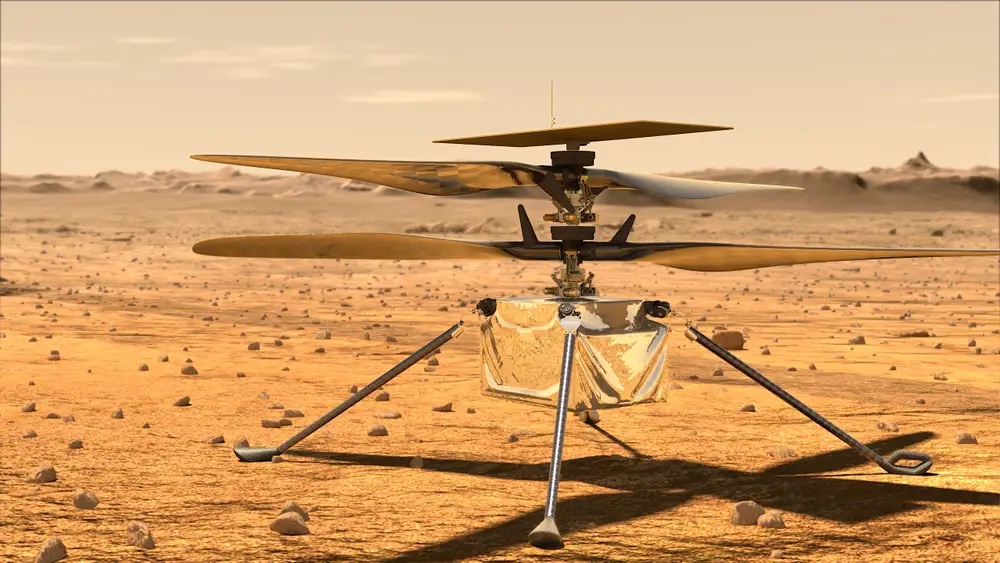Last month, a project equipped with Pacific Transformer magnetics yet again made history. “Ingenuity,” the appropriately named Mars Helicopter lifted off the Martian surface making it the first powered controlled flight capable of taking off, hovering, and landing outside of earth.
To commemorate the historic flight, the 4-pound craft carried a small piece of fabric from the renowned plane that took a man to the sky for the first time in 1903. Like that of the Wright brother’s first flight, Ingenuity’s initial flight too only lasted for a few seconds but it was enough to make history 118 years later.
The martian vehicle had a number of uncommon challenges. For instance, a typical helicopter on earth has a blade rotational speed of 450-500 revolutions per minute (RPMs) but has the luxury of an atmospheric density 100 times greater than that of Mars to push against. To overcome this, Ingenuity needed to be extremely lightweight and the rotors needed to rotate at a whopping 2,500 RPMs in order to achieve flight.
The program is also a departure from the typical multi-year projects that NASA is known for. For this mission, they took an approach right out of SpaceX’s playbook—a smaller, low-cost, high-risk undertaking where failure was an acceptable outcome. The goal of the lower-cost experiment was to determine the viability of a larger, more expansive, and capable machine in the future.
To date, the martian helicopter has only conducted 5 flights but has exceeded performance expectations and is scheduled to conduct additional flights every 2-3 weeks until August when the experiment officially concludes, however, for all intents and purposes, the mission has already been deemed a success.
Ingenuity joins a growing list of Pacific-powered spacecraft exploring beyond our world and yet another example of the trust our customers have in us to produce mission-critical magnetic components.


